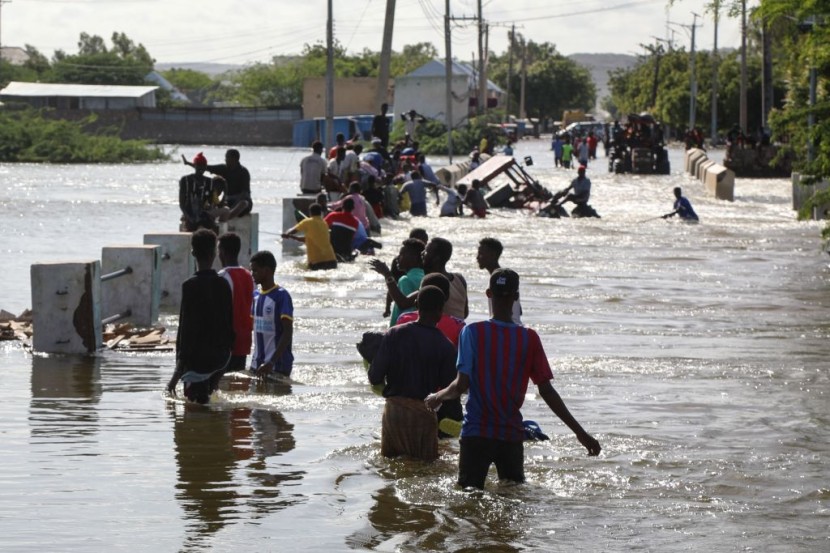
- Somalia's historic floods caused hundreds of thousands of residents to be displaced
- Authorities are conducting rescue and relief operations to aid the people affected by the crisis
- The unprecedented flooding was a result of an intense Gu seasonal rainfall that caused two rivers to overflow
Somalia authorities are conducting rescue and relief operations as recent historic floods have displaced hundreds of thousands of people in the region and killed at least 22 individuals.
The latest crisis is believed to be one of the country's worst in the last few decades, resulting from an intense Gu seasonal rainfall. This phenomenon causes the Shabelle and Juba Rivers located in Central Somalia to overflow their banks and pour into residential areas.
Unprecedented Flooding in Somalia
In a statement, the head of communications at WFP Somalia, Petroc Wilton, said that the floods had washed away livestock, inundated farmland, and displaced roughly 219,000 residents. She added that officials were using chartered flights, boats, and tractors to gain access to flooded areas, as per ABC News.
Somalia's Disaster Management Agency (SoDMA) was the one that reported that there have already been at least 22 casualties related to the flooding. The severe flooding also comes as the region is experiencing its longest drought on record.
In a statement, Wilton noted that 4 million livestock have died due to the flooding, arguing that it would take many rainy seasons to reverse the impacts of the drought. The head of the United Nations Food and Agriculture Organization (FAO) Somalia, Ezana Kassa, said this was the Shabelle River's worst flooding in the last three decades.
She added that the situation for most families in Somalia was "very precarious." Kassa noted that the floods have destroyed the livelihoods of these people, and there is now a risk of waterborne diseases that is on the rise.
Various air agencies and scientists have argued that the accelerated humanitarian emergencies are caused by climate change. According to CNN, they added that the worst thing about the situation is that the ones impacted the most by the effects are those who have contributed the least to CO2 emissions.
Hundreds of Thousands Displaced
One regional shopkeeper, Ahmed Nur, said that the entire city of Beledweyne was submerged underwater very quickly, including his business. He added that you could only see the roofs of the houses in the area and noted that they had to use small boats and tractors to rescue stranded residents.
Nur said that he was staying with some relatives on the edge of the city, where they celebrated rainfall just a few weeks prior. The shopkeeper said they were happy when rain fell and quickly planted crops amid rising food prices.
On Tuesday, the United Nations' Office for the Coordination of Humanitarian Affairs (OCHA) said that since March, the floods have affected nearly half a million people in Somalia. It added that initial estimates of roughly 460,470 people were affected by the floods, about half of which were displaced because their homes were in flood-prone areas, said DW News.
© 2025 HNGN, All rights reserved. Do not reproduce without permission.








